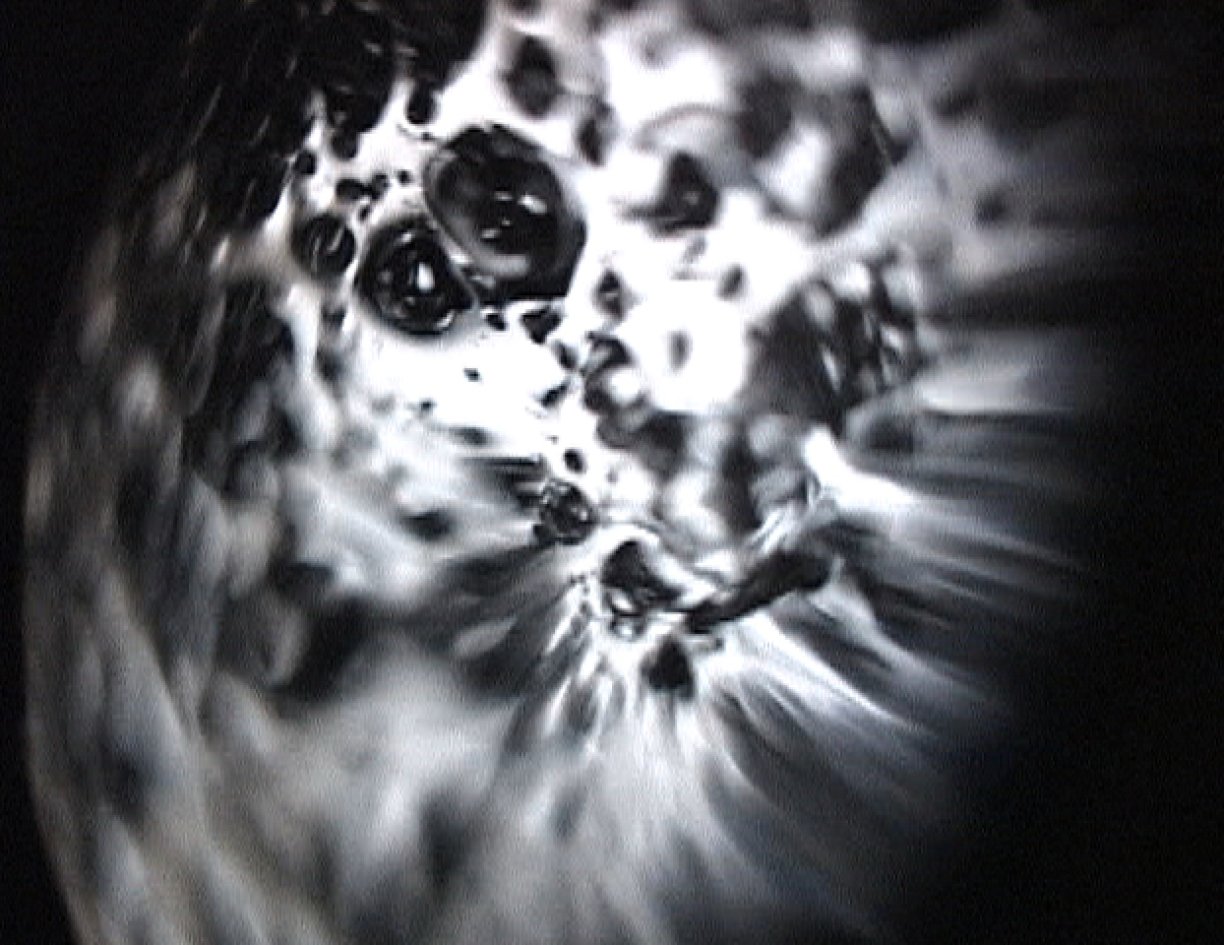The Wall Street Journal's Andy Beta interviews Ken Jabos and Aki Onda in anticipation of "Nervous Magic Lantern", a duo performance that receives its US premiere on December 12, 2012 as part of ISSUE's Artist-In-Residence program.
Two Artists Light the Way Into the Mind
By Andy Beta in The Wall Street Journal, December 11, 2012.
One of the trailblazers of American avant-garde cinema, Brooklyn-born filmmaker Ken Jacobs has worked alongside a half-century's worth of groundbreaking film artists, often investigating the act of seeing itself. His "Tom, Tom, The Piper's Son, from 1969, took a one-reel film dating from 1905 and deconstructed it by slowing it down frame-by-frame to reveal, with extreme close-ups, the heart of all film—the play of light and shadow before our eyes.
Mr. Jacobs's famous two-projector set-up, deemed the "Nervous System," showed two prints of the same film, one slightly out of synch with the other, allowing him to "play with the films like taffy, getting all sorts of strange things to be seen."
On Wednesday night at the Abrons Arts Center, Mr. Jacobs will deploy another of his cinematic concoctions, the Nervous Magic Lantern, in a live performance with the avant-garde musician and tape composer Aki Onda. Where the original magic lantern was a light-projecting device dating to the 17th century, Mr. Jacobs's version plays with the very concept of vision, using a flickering light source to reveal a veritable Rorschach of light and dark, with the audience left to decide what it has witnessed.
With music composed by Mr. Onda, the Nervous Magic Lantern will submerge spectators in a hallucinatory environment of "rotating landscapes, resembling volcanic glass, desolate craters or glacial gorges."
Messrs. Jacobs and Onda spoke with The Wall Street Journal this week at the New Museum about their first stateside collaboration. Mr. Onda brought two handheld tape recorders to record the conversation, and Mr. Jacobs used a 3D digital camera to snap pictures of our photographer.
How did you discover the Nervous Magic Lantern?
Mr. Jacobs: I stumbled upon the Nervous Magic Lantern. It's my invention and none of it makes sense. You can't theorize your way through it. These things that I couldn't plan on happened. I had to listen to my dreams to reach that point.
How does it work?
It has a spinning shutter, which creates a flicker of light, not unlike a Dream Machine. I don't know what the flicker does to our brains, but it does something. As science learns more about the brain, maybe they'll eventually be able to explain what the effect is, but I'm not interested in the science of it; I'm only interested in the experiential aspect of it.
Mr. Onda, what was your first experience with the device?
Mr. Onda: Ken showed me the Nervous Magic Lantern at his loft. The flicker itself has a history in experimental cinema, like in Tony Conrad's 1965 structuralist film classic, "The Flicker" [made up of alternating black and clear film leader]. But it's very different from that. It's more poetic. Even though there is only light, there's no concrete visual image, it still suggests something, some ghostlike illusions. You see "something," but each person sees different visual patterns.
Mr. Jacobs: It's actually really good capitalism, because you can charge people admission to see the contents of their own mind.
Mr. Onda, how did your sound projects find their way to Mr. Jacobs?
Mr. Onda: The reason I came to New York, in the 1990s, wasn't because of music, but because of film. I started working with avant garde films in Japan back in the '80s, but in New York there was Jonas Mekas, Stan Brakhage, Maya Deren, Kenneth Anger. And I knew there was much more here. I started coming to New York in 1994 and I spent much time at Anthology [Film Archives], watching films. In 2004, I was performing in Argos Festival in Brussels and they showed "Star Spangled to Death," Ken's seven-hour film. It's about Ken's individual history and concurrently about American history, and there's almost no borderline between the personal and the social. That's what struck me the most—the film as an act of memory.
Mr. Jacobs: I liked Aki Onda's approach to music because it's of the world, with these everyday sounds he captures on cassette and plays back in a live context.
Mr. Onda: Sounds should be about daily life. With my music, it's cinema for the ear. And what's interesting to me about Ken's Nervous Magic Lantern is that they are abstract images but somehow, you see all these ghostlike illusions in his projections.
Mr. Jacobs: Playing live, I don't attempt to illustrate the sounds he's creating. It's this abstract imagery and these personal sounds captured on tape and together they form this odd juncture with each other.
Mr. Jacobs, some of your previous film work is overtly political, while other works are abstract. Has your perception of art changed over the decades? Can it still affect social change?
Mr. Jacobs: My art reflects on the society only so much as it disdains society's values. It's not interested in them. I am interested in light, space, time, the 'real' material of art. I would be happy just to work on those elements, discovering more things about light, more things about space. With the Nervous Magic Lantern, it's political in the sense that it doesn't reach for the prizes. Understand, in the 1950s, we were living under tremendous threat of the Cold War and you had to be stupid to not have mindfulness of what was happening in your real life, not just what we were trying to attain with art.
A version of this article appeared December 11, 2012, on page A26 in the U.S. edition of The Wall Street Journal, with the headline: Two Artists Light the Way Into the Mind.
http://online.wsj.com/article/SB10001424127887324478304578173392855136314.html


